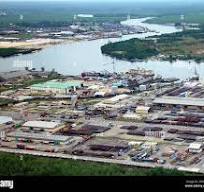Drugs that increase cancer risk
Propranolol. Sumatriptan. Tamoxifen. Epinephrine. What do these seemingly unrelated drugs have in common?
They are each one of the 250 drugs that the US Food and Drug Administration said have the potential to form cancer-causing chemicals called nitrosamines.
Drug manufacturers aren’t purposefully putting carcinogenic chemicals in their products. Rather, they can sometimes form during chemical reactions in the manufacturing process. And the FDA wants to tamp down on this happening. Along with publishing the list, the agency set limits on the amount of the dangerous substances each drug can carry. Those limits are designed to significantly lessen the risk of taking the drugs.
As a person who suffers from migraines, I have prescriptions for three drugs that are on the list. Two have the potential to form nitrosamines that the FDA considers among the most potent — those drugs each can contain up to 26.5 nanograms of the harmful chemicals in a daily dose. It’s not exactly a comforting feeling.
The limits set by the FDA require that the amount of nitrosamine in any drug doesn’t exceed a 1 in 100,000 cancer risk for people who ingest the chemicals regularly over a lifetime. But I don’t have any way of knowing whether the specific drugs I take contain zero nitrosamines or simply fall below that limit. The FDA’s list merely highlights the potential for these drugs to breach that limit. And in the meantime, I can’t really live with migraines. For me, maybe the risk is a necessity.
This is a problem the FDA and the drug industry have been grappling with since 2018, when blood pressure pills called angiotensin II receptor blockers, like valsartan and irbesartan, were found to contain a nitrosamine once used in rocket fuel called NDMA. Other drugs including the heartburn pill Zantac and the diabetes medication metformin were also found to contain NDMA.
As pharmaceutical companies and the FDA looked into this, it became apparent that some drugs weren’t forming known nitrosamines like NDMA, but different types of nitrosamines never seen before that the agency calls “nitrosamine drug substance-related impurities.” It’s a clunky phrase — which the agency shortens to NDSRIs — to indicate the chemical reaction that ends up forming the harmful chemical somehow involves the active ingredient in the drug itself. Two of the biggest drugs to contain NDSRIs were Pfizer’s Chantix, used to help people stop smoking, and Merck’s Januvia for diabetes.
If you’re curious if your drugs make the list, you can search here under Table 1. (Table 2 is those drugs known to form NDSRIs.)
Once drugs began showing up with NDMA in them, the FDA asked drug makers to ensure their products don’t also contain nitrosamines. The FDA noted in its guidance earlier this month that it’s learned that some drug makers have been checking their drugs for the known nitrosamines like NDMA, but not for newer NDSRIs. The agency said companies that haven’t done so need to assess their products for NDSRIs by November.
Even though it’s been five years since nitrosamines were discovered in everyday pills, it’s something the industry will likely grapple with for a long time. Just in February, Teva recalled 12,000 bottles of metformin because the medication contained elevated levels of NDMA.
There are steps drug makers can take to produce safer products, such as adding ingredients that mitigate the formation of nitrosamines. Here’s hoping they all get on that sooner rather than later. — Anna Edney
Source: Bloomberg





More Stories
Journalists decry air pollution, deteriorating environment of industrial areas of Lagos ports
Waning virus protection
The cancer killing drug that may replace chemotherapy